Brief summary of this website: I'm an inventor. Our planet needs help. Nothing restores and remediates our climate better than our demanding real research and development not corrupt baloney. Win! I recommend that we focus on nearly commonsense yet innovative solar heat storage, on new transit, on inhibiting the permafrost thaw-out and on inhibiting regional megadroughts. An index of subtopics is
down this page
Introduction and Table of Contents Page: Tools for Protecting Eaarth
Welcome to my website. I'm Paul Klinkman. I want to see 360 degrees of solutions, a full circle for researching and developing the tools that we need to optimally inhibit climate change.
Climate-driven tree deaths are leading to megadroughts. This alone is likely to cause human starvation on a vast scale within 20 to 40 years. We also have 1.7 trillion tons of greenhouse gases trapped in permafrost, and 20% of that will be released by the year 2040 per Yale360 online magazine on 1/21/20. Pointedly or collectively ignoring these strong possibilities should be considered an unacceptable, almost suicidal behavior on anyone's part, and this unacceptability would start with every climate crisis activist.
In my opinion climate change is 90% attributable to corrupt politics. See the flowchart below.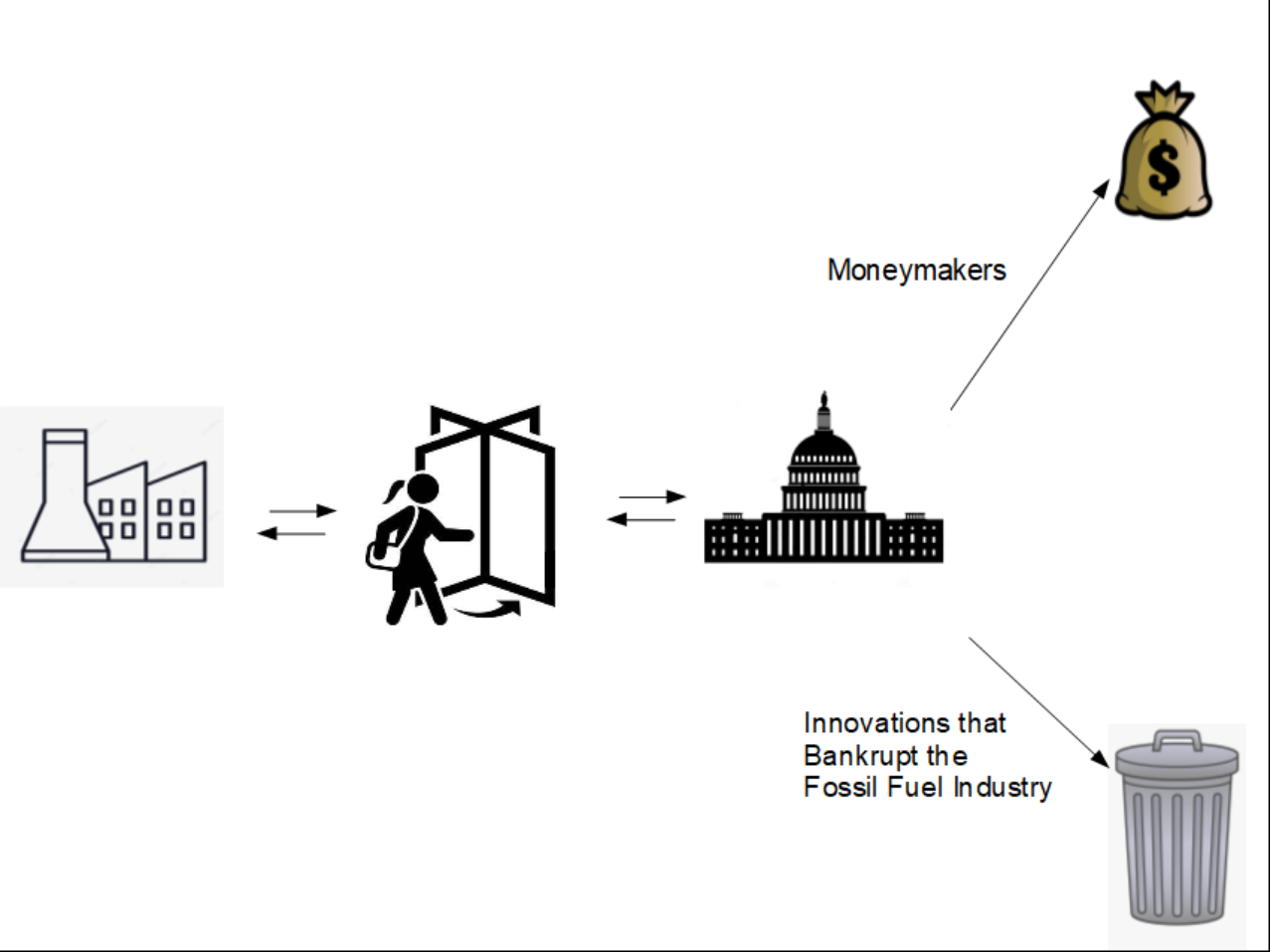
This entire 100,000+ word website, below and on two dozen other web pages, should make it crystal clear that a focus on practical innovation could have almost certainly performed small wonders on the climate crisis by now. However, you, your children and any theoretical grandchildren of yours may never see any of this mission-critical innovation because of the revolving door between the fossil fuel industry and most of the world's governments. No fossil fuel company executive transferred to a high government position will force the quick bankruptcy of her/his/their own company through innovation, even though that's exactly what humanity needs in order to have enough food someday soon. Our planet's best opportunity by far, at this point, is citizen organizing that forces perhaps 50% of 100 rather obvious, easily tested climate innovations through the appropriately named Valley of Death and then through their ramp-up stage.
In certain historical instances, science has been quite beneficial to activists. The women's movement invested good money in mifepristone and misoprostol as an abortion-inducing drug combination, and they also spent money on educating new doctors. The U.S. invested good money in photovoltaic electricity back when PV power cost 100 times as much as burning fuel to generate electricity. Denmark plunged into offshore wind R&D and their nation grew wealthy.
One of the tenets of the old tobacco industry playbook was to never fund research that might link cigarettes with lung cancer, and to bury or to bad-mouth any successful research. Through the 1920s-1950s the tobacco industry also did its best to buy off the American Medical Association. In our time the U.S. Department of Energy is a captured agency, with many honest low-level employees but with a revolving door between fossil fuel company executives and top DoE positions. I don't think for one minute that the DoE will ever have anything to do with inventions that quickly bankrupt parts of the fossil fuel industry. We, the activists, must take it upon ourselves to see the R&D through, because we want to live.
As explained in the documentary "Who Killed the Electric Car," the State of California forced automakers to build and then sell electric cars in 1999, the cars were a hit with consumers, and then industry lobbyists flipped the State of California's pressure off, and almost instantly every electric car in Califonria was legally recalled, often towed away in front of picketers and all were speedily crushed, not even recycled. That's the power of industry to crush all beneficial climate research and development.
This site is all about finding and comparing our best climate R&D avenues. If you're an engineer and a climate activist, my advice is that this entire site is must-reading starting with your specialty areas. If you're scared of math and engineering, go get one or more friendly engineering types to read sections through for you and then interpret them for you. We need to apply vast amounts of pressure on any government and on any political leader who makes empty claims about stopping climate change, so that at least one real person or a committee is forced to quickly do the named climate R&D work and inhibit climate change for real. We'll never really accept engineering blah blah blah!
The overall forecast for future climate tech should be surprisingly good. However, as of 8/1/23 my forecast for every last one of our many governments doing anything about climate tech is still a Hollywood zombie movie with a cast of thousands of bad governments, except for tiny bright spots. The U.S. pretended that covid wouldn't come; covid still came. Now here comes climate. Trees are on the decline worldwide and the Arctic permafrost is thawing. Nature is on a serious timetable. Are we?

 To your left is a clam. To your right is a weather forecaster. The weather forecaster is wrong sometimes, especially in Rhode Island. For example, in February of 2023 the Pawtucket School Department declared a snow day but there wasn't any snow or ice all day. The clam, by way of contrast, is never wrong. However, the weather forecaster gets paid and a clam is delicious if handled properly. Who would you rather be? My job, your job too perhaps, is to forecast cutting edge climate technology as best we can and to not clam up.
To your left is a clam. To your right is a weather forecaster. The weather forecaster is wrong sometimes, especially in Rhode Island. For example, in February of 2023 the Pawtucket School Department declared a snow day but there wasn't any snow or ice all day. The clam, by way of contrast, is never wrong. However, the weather forecaster gets paid and a clam is delicious if handled properly. Who would you rather be? My job, your job too perhaps, is to forecast cutting edge climate technology as best we can and to not clam up.
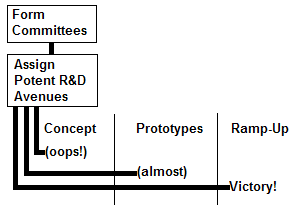 I aim to walk my talk. I invent like crazy even if nobody else does. I'm willing to be a microscopic non-governmental organization devoted to the full-circle development of climate solutions from concept to ramp-up, understanding that the only real power that I have right now is the power of knowledge, of which I have plenty.
I aim to walk my talk. I invent like crazy even if nobody else does. I'm willing to be a microscopic non-governmental organization devoted to the full-circle development of climate solutions from concept to ramp-up, understanding that the only real power that I have right now is the power of knowledge, of which I have plenty.
I call for the complete democratization of climate R&D decisionmaking, for complete sunshine and transparency in the ways that all governments spend climate-related research and development money. Creation of a well-focused climate R&D watchdog organization is going to be the single key climate breakthrough, the key to inhibiting climate change. Focus and win. Expect the fossil fuel industry to do such a job and eventually great masses of people starve. Expect heavily lobbied governments to do the R&D decisionmaking on their own and again many people starve.
I start my sunshine right here and now. This website is my own extensive, diverse personal portfolio of what we could be doing to quickly succeed at inhibiting climate change. I'm driven by all of humanity succeeding.
Wouldn't you like to work to develop the same victory for humanity? Good work takes time and energy, but it's time well-spent. I call for other citizen engineers and for allied activists to join me on a committee to further this discernment work. If we don't do this work then I'm certain that Exxon will do this work for us, but of course they'll do it wrong.
Therefore lay down parts of your life if you can, and then live your life for our children and for our grandchildren. Arise in courage if you can. Arise! If you can't arise, your children will understand that at least you knew but you couldn't arise, and they will certainly forgive you.
This 100,000+ word online encyclopedia of brand new high-quality climate change inventions is highly improbable in this modern world. Its mere existence doesn't even make that much sense to me and I wrote this website. But, as long as you're here you might as well scroll down to the bottom of this page past the chapter index to the detailed index and see what specific climate projects fit your needs. 100,000 words isn't nearly as long as "War and Peace" although the engineering makes for slow reading. You might eventually read the whole site and become enlightened and wise in solving most of climate change. Lucky you!
I'm putting my new inventions out into the world for free. Once the best avenues for inhibiting the climate catastrophe have reached a critical mass of widespread political acceptance, it will 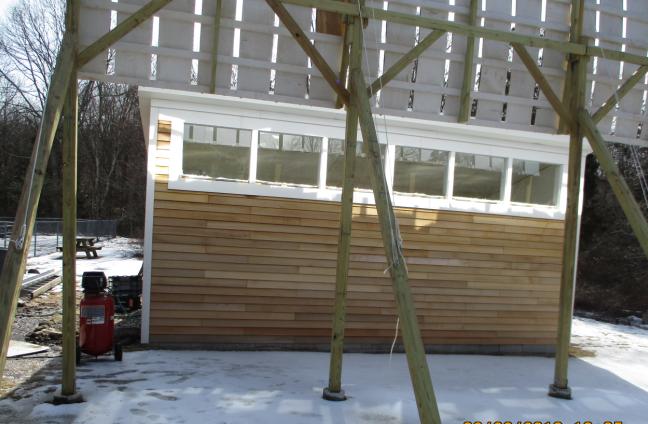 become politically impossible for either our federal government or any other national government to sweep the new inventions under the rug, to handwave the ideas away, to tell the most gullible among us that the ideas can never work. As for me, I might get hired someday because so far, I appear to be the planet's best single climate inhibitor bar none.
become politically impossible for either our federal government or any other national government to sweep the new inventions under the rug, to handwave the ideas away, to tell the most gullible among us that the ideas can never work. As for me, I might get hired someday because so far, I appear to be the planet's best single climate inhibitor bar none.
If you find at least some of my ideas to be potent for quickly changing climate change, then you as a single reader can be helpful today by spreading the word about this website. My goal is to present as comprehensive a total engineering solution as possible to the climate emergency.
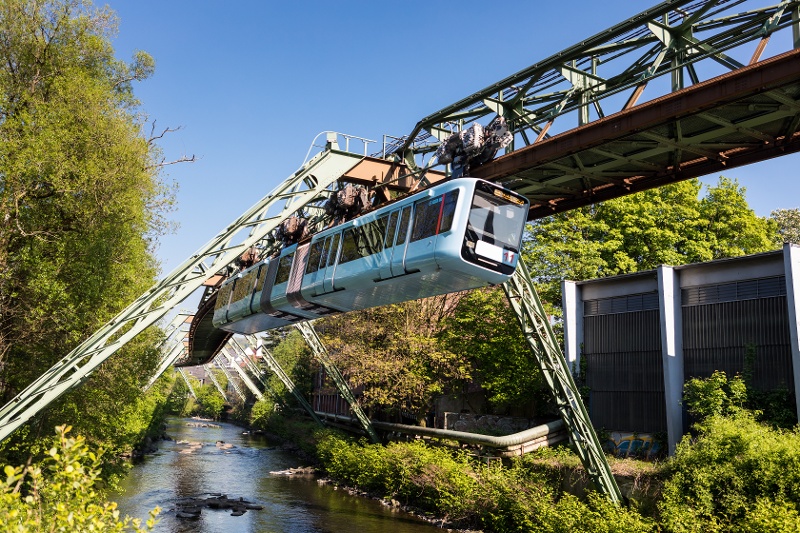
I'm writing this website for three audiences:
1. Climate activist allies of solar and climate engineers: You need to know how quickly we can succeed. You need to know precisely when various political leaders aren't being forthstraight with you. You need to work with groups of engineers and inventors who can inhibit major chunks of the climate crisis. Given our world’s pervasive government corruption issues, you need to know whenever these mission-critical groups aren’t being given the funds to keep going.
2. Engineers: We probably want to bring most if not all of these inventions to life. We want to prove that any particular invention might not work, but then we want to salvage the invention if possible or come up with something better. We often need to talk in plain language to the non-engineer activists. Organize!
3. The planet still needs thousands of inventor apprentices who could someday become inventors in many subfields of climate change. Good inventors are far too rare in this world, but they don’t necessarily have to be rare. If you might make a good inventor, please dare to do the right thing if you can. Or, dare to train and mentor the great.
As a movement we should beat the bushes to discover the existence of other inventors with other climate-related inventions. My best skill is inventing and we need that skill right now, so somebody else needs to be reporting on and reviewing the potency of many other people's inventions.
"There's no such thing as a dumb engineering question" -- Just don't ask who said it!
This Website's Chapters
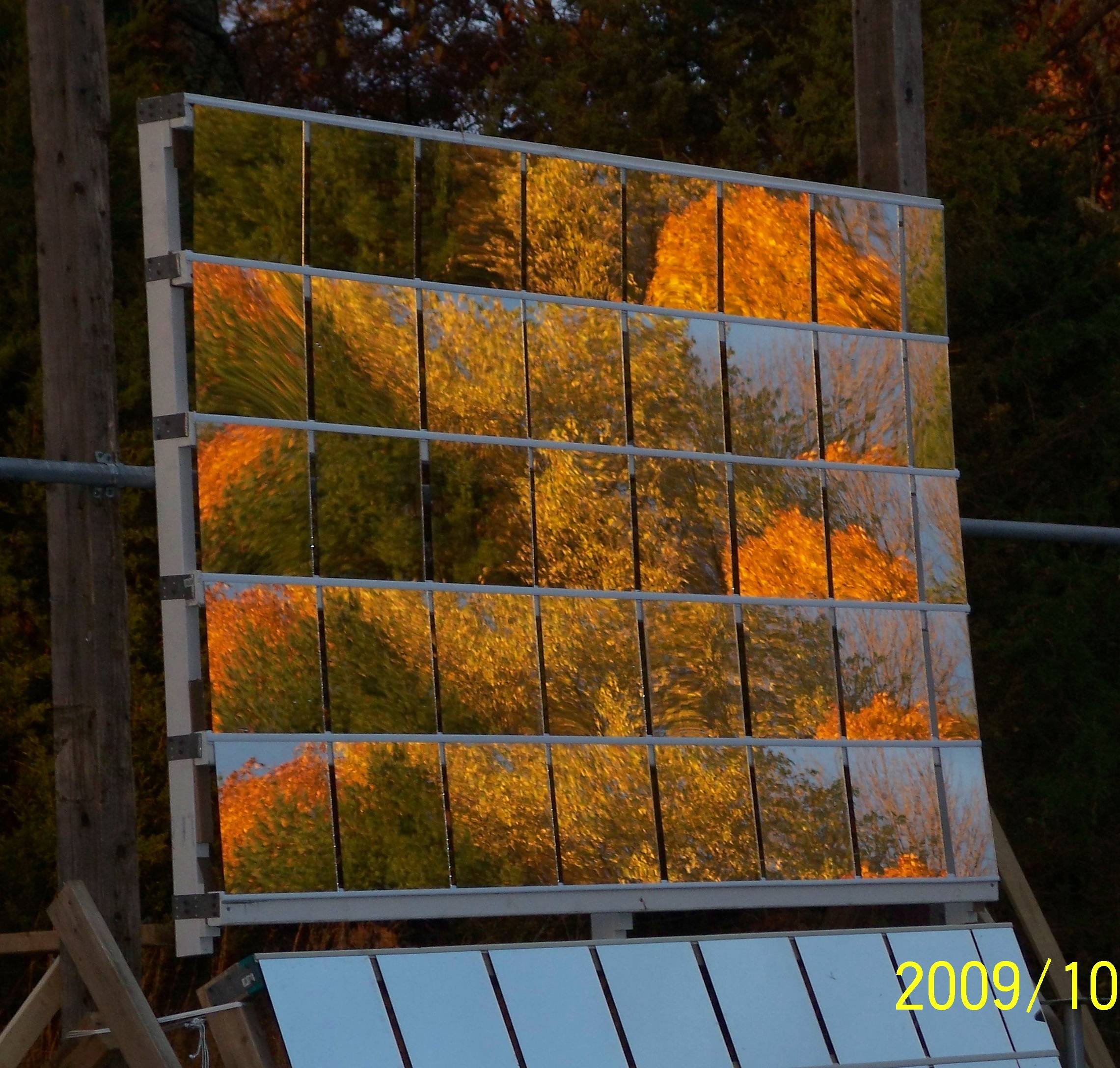
(My entire older 2021 website has been moved to here.)
H E A T
B. Heating Homes with stored solar heat plus heat pumps
C. District Heating
D. Heating to Industrial Temperatures - for example, solar assists for steel smelting
E. heliostats
reinvented
E L E C T R I C I T Y
F. Generating winter night electricity from geothermal heat storage
G. An energy-storing ski lift
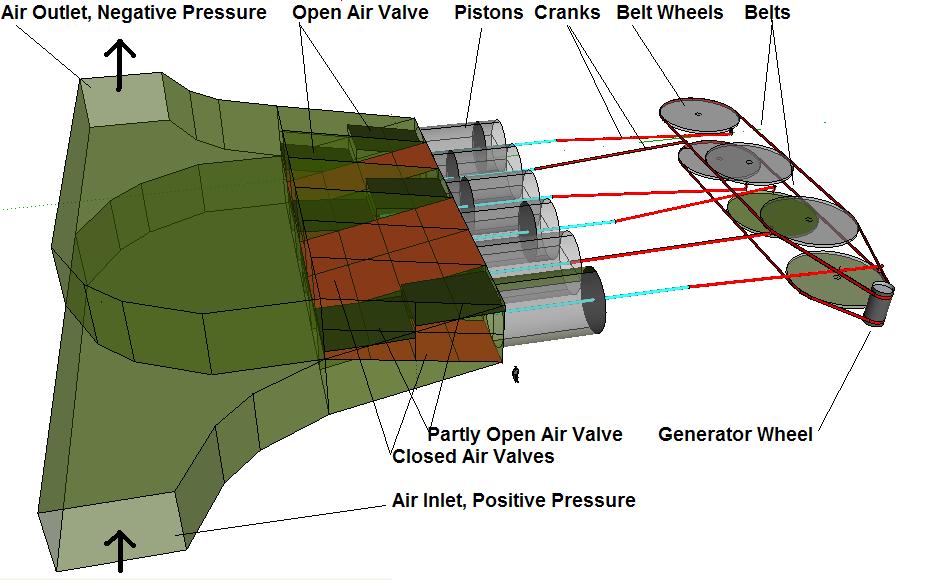 H. Electricity from a mountain slope solar chimney
H. Electricity from a mountain slope solar chimney
I. Electricity from two kites
J. Low total energy costs for hydrogen storage
K. An efficient algae canal
; T R A N S I T
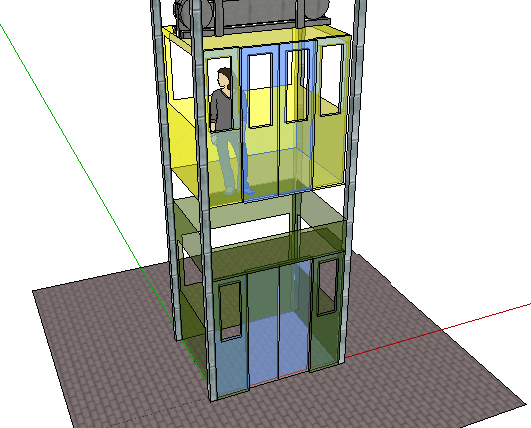 L. Teleport, my affordable above-street transit system, with many details
L. Teleport, my affordable above-street transit system, with many details
M. Train/Bus improvements
N. Aircraft improvements
O. Ocean-crossing cargo ship improvements
P. Bicycle improvements
Q. Auto and road improvements for the short term
E C O L O G Y, remediation on a planet out of whack
R. Keeping things frozen in polar regions
S. Tools for preserving trees and forests
T. A new generation of firefighting tools
U. The role of night fog in ecosystem restoration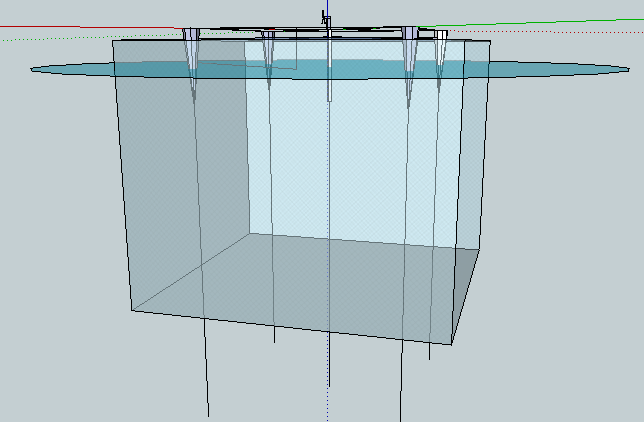
V. My zero-fuel sustainable affordable world-beating greenhouse in West Greenwich, RI
W. Waterway and ocean remediation
W O R K I N G . T O G E T H E R
X. Principles and my ground rules for assembling this inventor's website.
Y. Living within a network of government and corporate actors
Z. Organizing a well-focused climate research and development B-corporation
AA. About the author
AB. Organizing an effective and self-governing comments forum
Subheading Index with Links
- - A. The Preface, Table of Contents and this Subheading Index is here on webpage A.
- - B. Home Heat Storage
B1. Do rock beds work?
B2. Frame safety
B3. Heating the West Greenwich Greenhouse
B4. Storing heat within the basement floors of houses
B5. A heat appliance as an alternative to solar hot water
B6. Impact
B7. Storing coolness within a concrete floor
B8. How not to solar-heat a house
B9. Developing a specialized heat pump for this job
B10. Heat Transfer issues in an existing concrete floor
B11. With two or more cycles of heat transfer the maximum temperature drops each time
B12. Heat pumps plus solar storage
B13. R-Values and BTUs
B14. Pass-through versus closed loop systems
B15. Temperature limit testing
B16. Solar air heat collecting systems
B17. A Warwick, RI Experiment
B18. The carport mount
B19. An agricultural heat collecting system
B20. In-roof solar heat collection
B21. Canaries and air
B22. Mold
B23. Photovoltaic power and dirty electricity
B24. Canaries and wifi
B25. HVDC lines vs. 220 Kv HVAC lines: the politics of public acceptance
- - C. Geothermal district hot water
C1. The physics of having enclosing Russian doll thermoclines in the ground for storing seasonal heat
C2. Distilling steam from brackish water versus using fresh water
C3. District heating and water temperature
C4. Supplying multiple levels of heat
C5. Current district cooling systems
C6. Active geothermal coldness storage
C7. In-situ coldness storage needs its own area
C8. Storing seasonal coldness
C9. Seasonally manufacturing coldness
C10. Coolness, moisture and toxic mold
- - D. Industrial Heating
D1. Industrial preheatin, between boiling water and steelmaking
D2. Facing up to a less dependable energy supply
D3. Heating Wooden Pallets
D4. Solar Metal Smelting
D5. Manufacturing ammonia
D6. In-Situ mining
D7. Solar Metal Smelting
D8. Solar source in-situ mining
D9. Incentives
D10. Carbon dioxide capture has verification risks
D11. Producing cement with solar heat and with carbon capture
D12. CaO multiple cycle carbon sequestration modules
D13. Facing up to the world's manufacture of carbon dioxide products
D14. Sequestering a pipe full of pure carbon dioxide
- - E. Home Heliostats
E1. Heliostats
E2. Combining a heliostat with a skylight
E3. A mirrored window screen concept for a hurricane-proof heliostat
E4. A house greenhouse
E5. A basement greenhouse
E6. A cafe sun spot
E7. A garden surrounded by skyscrapers
E8. Solar assists for clearing of snow
E9. Industrial heliostat field construction
E10. Minimizing cosine focusing errors
E11. Building multiple reflecting targets for each heliostat
E12. Distance from the heliostat to the solar target
E13. Hexagonal heliostat fields
E14. Sending near-parallel sunlight through tubes and around bends
E14a. Fitting almost-parallel sunlight into a tube
E15. Merging mirrored tubes to save mirrors
E16. Solar concentration limits within mirrored tubes
E17. Tools for absorbing solar heat
E18. Heliostats shading parking lots
E19. Meltdowns and hanging roof mirrors
E20. Replaceable reflector modules
E21. Microfocusing problems
E22. A self-adjusting heliostat tracking software algorithm
E23. Implications
- - F. Active geothermal heat storage with dispatchable electricity generation
F1. Geothermal basics
F2. Natural geothermal energy
F3. The Drake Landing Housing Development
F4. Waterproofing the top of a hill
F5. Active geothermal heat storage
F6. Russian doll thermoclines
F7. Groundwater issues
F8. Passive geothermal heat storage
F9. Glass vacuum wall insulation
F10. Closing the solar tunnel at night
F11. High temperature geothermal issues
F12. Results
F13. Alternative approaches considered
F14. Climate engineering job jar
F15. Eutectic salts
F16. Reimagining the solar power tower
F17. Power tower issues
F18. Results
- - G. Electric power storage with an automated ski lift
G1. Predecessor inventions
G2. Linked chains with smooth, precipitation-resistant tops
G3. A two-dimensional roller chain
G4. A ski lift power transmission scheme
G5. Sacks of mine tailings
G6. Safety
G7. Impact
G8. Negawatt concepts
G9. Preheating and pre-cooling buildings
G10. Deferring electricity use
G11. Optimizing the best times for electricity generation
G12. Stored electricity
G13. Sending people home
G14. Daylight Savings Time
- - H. A mountain slope solar chimney
H1. The Manzanares updraft tower prototype
H2. Net change in elevation
H3. Internal drag
H4. Preheating air in stages
H5. Air tube construction axioms
H6. Exhausting smog from a valley
H7. Midday chimney updrafts versus sunset and nighttime updrafts
H8. Chimney construction techniques
H9. Chimney wall layers
H10. Strong chimney walls versus weak walls
H11. Hang gliding: attractive nuisance or auxiliary income stream?
H12. Catalyzing NO2
H13. Absorbing CO2
H14. Water vapor can deliver extra updraft power
H15. Generating electricity twice with steam
H16. Distilled water
H17. Creating new snowpack and glaciers
H18. A vortex-shaped cloud
H19. Slow piston turbines and air chimneys
H20. Distilling steam from brackish water versus using fresh water
- - I. Two Kites
I1. Kite electricity in light winds
I2. Predecessor: putting propellers and turbines on kites
I3. Kites that pull out kite cables to turn ground-based electric turbines
I4. Balloon/kite combinations can reach well into the atmosphere
I5. A linked chain for each kite’s reel
I6. Kite design
I7. Kite control
I8. Support balloons
- - J. A Hydrogen Storage Ravine (for modern steelmaking)
J1. Huge buildings that only enclose air
J2. Construction axioms for vast empty buildings
J3. The hydrogen building's design and construction
J4. An inert gas layer
- - K. Algae canal greenhouse designs
K1. Why algae?
K2. A type of balcony seating for algae
K3. Moderating heat and coolness
K4. Dimensions of a possible prototype
K5. Adding nutrients
K6. Setting a standard for sequestering carbon
K7. Your community can grow fuel.
K8. Agricultural-scale greenhouses
- - L. Above street automated ski lift gondolas with individual motors and driving wheels
L1. Teleport, my transit system
L2. Teleport advantages
L3. Transit and technological innovation, a diversion
L4. Wuppertal suspended train system versus American Light rail with dedicated trackage
L5. Two support cables versus a heavy support rail
L6. Maintaining only one gondola car per cable section
L7. Using smaller gondola cars
L8. Weighing ultralight cars
L9. Gondolas with individual motors and driving wheels
L10. Batteries on gondolas
L11. Support cable options
L12. Climbing the last meter of a slack cable
L13. Long cable life
L14. An end to motion sickness
L15. Hard rails beneath a suspension cable
L16. Bidirectional cars versus one-directional cars
L17. Teleport switches
L18. Elevator doors and elevator micro-stations
L19. A Teleport car barn
L20. A Teleport tow truck
L21. Teleport elevators
L22. Extra car storage at elevators
L23. More Elevator types
L24. Teleport-capable buildings
L25. Better than Stations
L26. Using pods and tractors
L27. Higher speed trains
L28. A Teleport community
L29. A Teleport-enabled condominium
L30. Teleport and commerce
L31. Industry
L32. Teleport as a set of bus lines
L33. Teleport networks
L34. A city-wide network topology
L35. Rush hour and after midnight system performance:
L36. Caravan ordering
L37. Off-network transportation
L38. Costs
L39. Early Implementation Costs - not cheap but vastly worth it
L40. Teleport safety principles
L41. Specific Teleport designs for airports
L42. Runaway cars
L43. Devices for cable failure
L44. Network failures
- - M. Rail and Bus
M1. Slightly increasing subway train lengths
M2. Off-hours trains
M3. Double elevator doors at subway stops
M4. New cowcatchers that can savc the lives of trespassing kids
M5. Cowcatchers that can push minivans and buses off of railroad tracks
M6. Electric train engines-battery cars
M7. Passenger trains are priority trains
M8. Traffic signal preemption for buses
M9. Battery pack swapping for campus shuttle buses
M10. Reduce bus patron waiting time outdoors
M11. Bus times connecting well with trains
- - N. Aircraft Improvements
N1. Slower aircraft will use less fuel
N2. Electric batteries for puddle jumpers
- - O. Ships
O1. Kitesurfing towboats pull existing cargo ships across oceans
O2. Mandating port to port cargo ship speed limits
- - P. Bicycles and Pedestrians
P1. Pedestrian and bicyclist crosswalks at night
P2. Above-street pedestrian and bicyclist skyways
P3. Reducing pedestrian deaths
P4. Bicyclist-controlled road paving crews
P5. Traffic signals
- - Q. Motor vehicles
Q1. Express lanes funneling thru traffic past bad weaves
Q2. Handicapped parking spots
Q3. Free 20 minute parking spots
Q4. Traffic signals showing both red and yellow
Q5. Reducing wrong way drivers
Q6. A campus mobility access service that uses golf carts
- - R. Frozen Regions
R1. Frozen ecology
R2. Flaring Arctic methane
R3. Enhancing winter sea ice formation with seawater pumps
R4. Re-anchoring the Thwaite glacier onto the seabed
R5. A coastal plain seawater pump
R6. Enhancing permafrost refreezing with air pipes
R7. Artificial snowmaking for the climate
R8. Half of the planet might need more snow
R9. Mountain glacier and ice sheet runoff recycling pumps
R10. Another glacier repumping design
R11. Adding extra snowflakes in early spring, and possibly down to the Frost Belt
- - S. Trees
S1. Soil-conserving agriculture
S2. Why trees
S3. The loss of trees
S4. Desertification
S5. Microswales
S6. Spiral runoff channels on hill slopes and terrace swales
S7. Small water projects
S8. 200 million new trees in Niger
S9. A Great Green Wall strategy
S10. Which tree species are overall better at inhibiting our megadroughts?
S11. Tree migration - a Noah's Ark project
S12. The urban trellis
S13. Growing street vines in a nursery
S14. Vine trunk branching control
S15. Natural trellis edge control
S16. A linear park trellis above a bicycle path
S17. Summer shade, winter light
S18. Getting a tiny benefit out of urban trucks
S19. Trellis sunlight holes
S20. Other uses
S20a. Researching the fundamentals
S21. Managing prairies for carbon sequestration
S22. Bamboo windbreaks
S23. Solar windbreaks
S24. Photovoltaic farms and cropland
S25. Farmland and soil moisture absorption
- - T. Firefighting
T1. Off-season prescribed burns
T2. Energy-efficient airdrops
T3. Ice airdrops on wildfires
T4. Launching wildfire icicles from trucks
T5. Ground and air firefighting drones
T6. Firehose advances
T6a. Pulse water cannons
T7. City water vs water for fires
T8. Trail, creekbed and steep mountain vehicles for firefighting
T9. Trucking water on roads
T10. Fireline ember and spark netting
T11. A smothering ground cover barrier for a fireline
T11a. Human neighborhood wildfire shelters
T12. Fire prevention R&D
T13. Fighting tundra megafires
T14. Concentrated solar used as a military demining sweep
- - U. Night fog
U1. Fog ponds for desalinization in arid areas
U2. Fog and nearby mountains
U3. Turning Greenland snow white again
U4. Heat-based water desalination
U5. A rockbed water condensation option
U6. Fog ponds
U7. Solar heating of water while generating photovoltaic power
U8. Preheating any variety of water in stages
- - V. A Sustainable Greenhouse
V1. Preamble: parabolic dishes and linear troughs:
V2. The greenhouse's history
V3. The Attleboro prototype
V4. The Greene School prototype, West Greenwich, RI, 2018
V5. Ground-level heat storage details
V6. Weeping windows
V7. White window trim and heat issues
V8. Summary
V9. Future greenhouses
V10. Linear trough reflectors aren't perfect
- - W. Waterways - ocean, rivers, marshes
W1. Conserving wetlands
W2. Adding wetlands
W3. Creating saline marshes on desert sinks
W4. Rice paddies design
W5. A history of water storage and collection
W6. Pond/canal evaporation suppressors
W7. Poaching Midwest water toward the Colorado River near the Continental Divide
W7a. Safety measures for dam collapse
W7b. Turning a faster-flowing stream into a wider fire prevention marsh
W8. Sewage remediation in dead rivers and in dead ocean zones
W9. River oxygenation for phosphate pollution
W10. Cooling small refuges of ocean
W10a. Undersea mirrors
W11. Oceans as active carbon sinks
W12. Sea level rise
W13. Barrier island lifesaving typhoon shelters
W14. Building river deltas
W15. Helping to preserve fresh water lenses underneath low-lying islands
W16. Cloud brightening with pure water (or with airborne sea salt particles added)
- - X. A philosophy of climate success
X1. Living in covenant with our children
X2. Delivering the news
X3. Climate and you, the reader
X4. On the nature of invention
X5. My avoidance of making detailed financial reports
X6. Goodwill and standards
X7. Integrity
X8. My ground rules for invention
X9. Drawdown
X10. What is thinkable?
X11. My Values
- - Y. Working with governments / corporations
Y1. World Politics
Y2. Combined gun and plow
Y3. The challenge of quickly bankrupting a large industry: documentary: “Who Killed the Electric Car”
Y4. The future
Y5. The persistence of ineffective solutions
Y5a. The university-industrial complex
Y6. Zen and saying the opposite
Y6a. Market Economy Fails
Y7. Eventually make governments responsive through better online decision-making among ourselves.
Y8. All the unwritten rules
Y9. Think globally, act locally
Y10. A fractional ranked choice voting algorithm
Y10a. An algorithm that apportions districts to reduce politically-driven gerrymandering
Y11. Suffrage for 16 year old citizens
Y12. Corporations
Y13. Corporate honor roll
Y14. Corporate self-accounting
Y15. Ecological problems inherent in mining and construction projects
Y16. The costs and the risks are all acceptable, but acceptable to who?
Y17. Creative corporate and government accounting for costs and benefits
Y18. Dealing with troll farms in community comment forums
Y19. Emigrating to Planet B
Y20. A chemtrails fable
Y21. The nuclear energy sham
- - Z. An inventor-driven climate research B-corporation
Z1. College courses of study specifically for invention
Z2. A hybrid company/foundation for climate embryo projects
Z3. Inventors must actually get paid
Z4. Non-inventors
Z5. Inventors' intake procedures
Z6. Inventor and employee payment procedures
Z7. Multiple types of street cred as a new form of non-government currency
Z8. Non-salary company cred compensations
Z9. Business values
Z10. Embryo finances
Z11. Organizing this foundation
Z12. Invention and development criteria
- - AA. About the author
- - AB. Forum for comments
AB1. Earning street cred online
AB2. If you don't have any street cred, why should we trust your avatar's messages?
AB3. If you don't have any real street cred, why should we trust your avatar's votes?
AB4.Community-run online decisionmaking
AB5. Organize hard-won decisions and information











